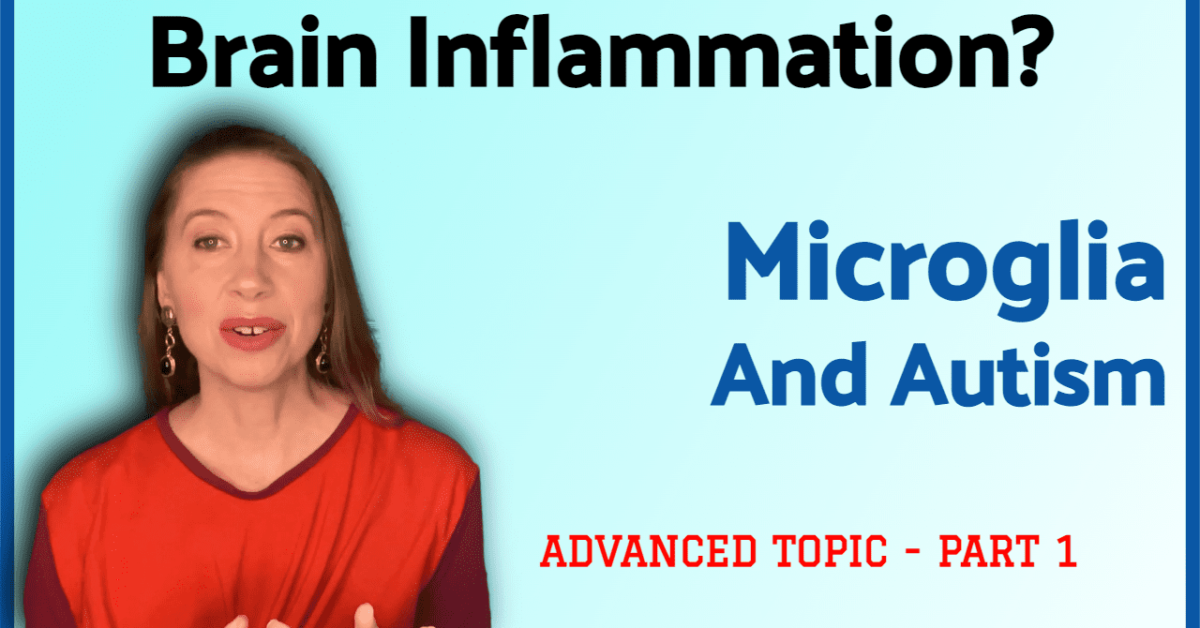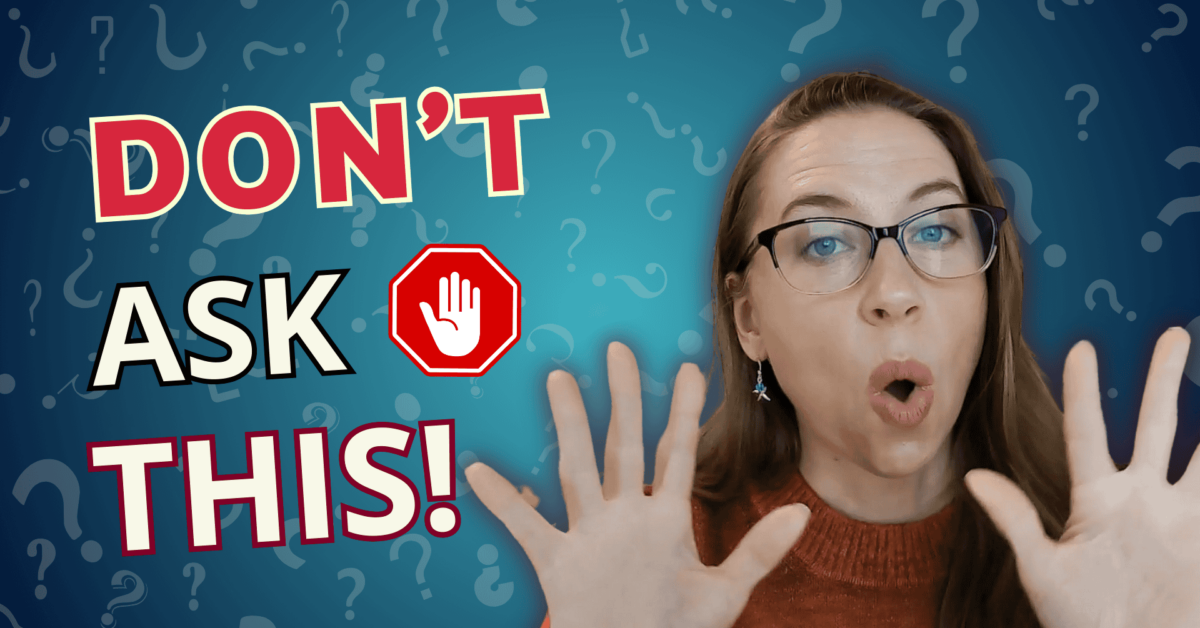Does your child have brain inflammation?
Has a doctor spoken to you about microglia?
Do you want to know about these brain cells?
Originally, microglia were thought to be immune responder cells within the central nervous system. But scientists have now discovered their complex role in neurodegenerative disorders, including autism.
Microglia were first described in 1919, but so much has changed obviously, since then. Come learn about the microglia so that you have up-to-date information. Let me get my slides so you can see what I’m talking about.
What are Microglia and how does Autism impact Microglia?
Very good questions and this is all cutting-edge information. And I do want to put a warning that this is an advanced topic. This information is not particularly useful at the beginning of the autism journey unless you want to view this as gathering information, it will be information you need later on. But this is not something that if my child was diagnosed right now, it wouldn’t necessarily be relevant for like at least one and a half years. There are a lot of basic steps to take and doing advanced steps early doesn’t make the impact that you might think it does. You really want to take those beginner steps first. Get a good solid foundation in health, and see how much your child changes in their happiness and their ability to learn and to really be who they actually are. And then if you need to take these advanced steps, this is what the information is for.
Brain Composition
Let’s talk about brain composition, so we’re all on the same page. The brain, there are several different distinct style types in the brain and the majority of them are derived from neuronal stem cells when we’re developing in the central nervous system. And the cells in the brain are neurons. We’re all familiar with those. There’s glia and then there’s a small population of resident Macrophages. And in the brain, they are specifically called microglia.
What are Macrophages?
Great question. Macrophages in our body, typically what they do is they surround and kill microorganisms. They remove dead cells and they stimulate the action of other immune system cells. Super important roles. You can see all three of that is very important. And the same occurs in the brain. Except those cells are called microglia.
Microglia, given their similarity to tissue macrophages. Right. Microglia in the brain, microglia were initially thought to basically do the same thing as macrophages in the rest of our body. Originally, back in 1919, they originally thought that Microglia were responsible for innate immunity in the brain and they certainly do that. They do so much more than just simple immune surveillance.
What do Microglia do?
Microglia serve numerous roles such as instructing progenitor cell fate decisions and communicating with other glia cell populations, that’s really important. Enabling synapse formation, again, is obviously very important. These are all very important things that microglia do.
Microglia continuously survey their local environment, right? They are on the lookout, OK, what’s going on, what’s changing? And they respond to changes that are occurring in the brain. In addition to the immune surveillance that they do, microglia also promote the formation of neurons and facilitate synaptogenesis myelination. Myelination obviously is very important. Different pruning and different synaptic activity. You can see microglia, they are involved in so much in our brains.
Identifying Microglia
Back in the old days, about 100 years ago or so, they had been classified based on their function, their inflammatory profile, and or their shape. Basically, you would look at them through a microscope and you had to identify them based on their physicality. Now we have single-cell RNA sequencing, they’ve been able to study microglia in animal studies and scientists have been able to identify different populations of microglia. There’s not just one type of microglia in the brain, there are different populations. And microglia have been identified that reflect the developmental age of the mouse. These were animal studies, it was all mice, the local biological events occurring during different developmental periods, and then the pathological context – neurodegenerative diseases, and brain tumors. etc.,
Now that scientists can use single-cell RNA sequencing, they can get a lot more specific to understand what the microglia are actually doing. Right? These populations of microglia change depending on what’s going on in the local environment of a person’s brain.
Microglia and Disease
In the setting of CNS disease, it’s now appreciated that microglia are not passive bystanders, they don’t just merely react, but instead, they have active roles in the initiation and progression of numerous CNS disorders ranging from Alzheimer’s, ALS, brain tumors as well as autism. There’s certainly a lot of different research going on with microglia in different therapeutic areas, autism being one of them.
How do Microglia change?
Microglia perform many functions in the healthy, developing, and adult brain. However, it’s also true in the context of disease. Here’s a quote from an article, a scientific article. References are at the end.
“It is not surprising that they, (meaning microglia), can be reprogrammed at the epigenetic or transcriptional level to adapt new functional and molecular identities in a context-dependent manner.”
Basically what that is saying is microglia change depending upon the local environment of what’s going on in that person’s brain.
This is pretty remarkable, right? You have a particular cell, a microglia that can actually change its function based upon what is going on in the body. If you’ve ever heard of anyone talking about epigenetic changes, these are real. I know certain buzzwords get passed around on social media and I don’t know, they start to seem kind of bizarre or just like exotic. But epigenetics is real.
What can change Microglia?
- Genomic changes
- Sex- male versus female
- Aging
- Environmental factors – this is really important, especially relating to autism. The medical treatments (radiation and chemotherapy) are usually not too relevant to those with autism, especially if they’re under twelve or so. Prenatal toxin exposure is extremely important. Obviously, none of us who were pregnant wanted to expose our unborn children to toxins. But this world is changing and sometimes we’re exposed to things that we don’t even know it. And stress as well. Stress can actually change microglia. And autism certainly can be very stressful to a young child with autism, to an adult with autism, as well as any family members who are helping to take care of them. So environmental factors can change the cells in our brain
- Systemic disease – originally the brain was thought to be this immunologically privileged site. It was just this sense of purity. We had the blood-brain barrier and nothing was supposed to be able to penetrate that. And our body has a dynamic relationship, there really isn’t one part of our body that’s really separate from the other. What’s going on in the rest of our bodies? The brain and the microglia, it’s going to be impacted.
Microglia and Autism
There are several animal studies and for example, this is related to genomic changes. Mice lacking the microglia (Cx3cr1), a particular genomic aspect exhibit deficits in social interaction and increased repetitive behaviors.
Mice with microglia Trem2 loss have sociability deficits similar to those seen in children with autism. This is really just looking at one aspect of change.
If there are genetic changes, how does that impact microglia? And then downstream, how does that impact a person? Eventually person this was an animal (mouse), how does it impact their behaviors?
Conclusions
Cutting-edge science information makes a difference when you are making decisions for your child. You want to work with the most cutting-edge scientific information. You want to work with doctors who actually know this.
This is a quote from the research article.
“In summary microglia play critical roles in the pathogenesis of many neurological diseases and are intimately involved in the brain response to injury and infection.”
If you’ve taken some of the basic steps to help your child with autism, and there are still challenges, microglia might be an aspect that could restore certain aspects of health for your child. You definitely want to work with a knowledgeable doctor. Again, this is all cutting-edge research and it makes a difference to have this information so that you can make quality decisions for your child.
Reference
And here’s the reference that I speak of:




